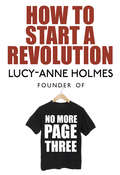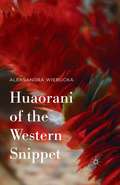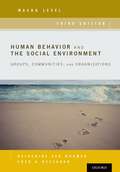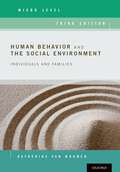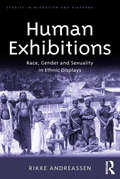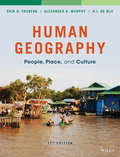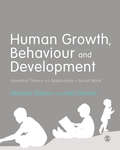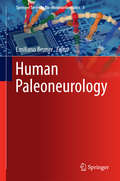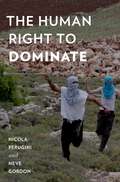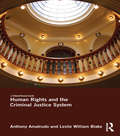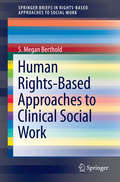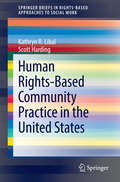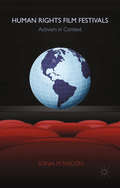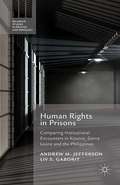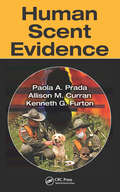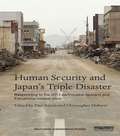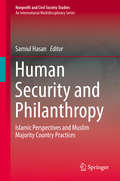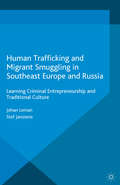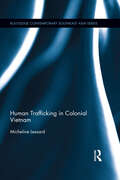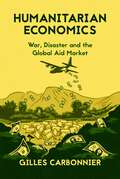- Table View
- List View
How to Start a Revolution
by Lucy-Anne HolmesA bite-sized guide to making change happen and the story behind the No More Page 3 campaign, written by its founder. Change doesn’t just happen. It starts with the idea that something could be different, could be better. It starts with a person who is brave enough to stand up and say, ‘Stop.’ This is what Lucy-Anne Holmes did when she wrote a letter to the editor of The Sun asking him to stop printing pictures of topless women on Page 3 of the paper. This was something that had been happening for forty five years but which - she suddenly realised - she found outdated and inappropriate and, after thinking about it, not unrelated to a lot of the bad things that happen to women. Launching a digital campaign, starting an online petition and recruiting a team of like-minded people, Lucy-Anne started a revolution. Hundreds of thousands of people signed the petition, wore the campaign t-shirt and dared to say #NoMorePage3. Lucy-Anne had never campaigned on anything before. She wasn't particularly political. She'd never been confrontational. But she found that you only need one thing to start a campaign - and it isn't cash, experience or even a thick skin. It's passion.If you have a desire to change something, read what Lucy-Anne has to say. She’s been there, done that, worn the t-shirt and come out the other side having made a difference in the world.
Huaorani of the Western Snippet
by Aleksandra Wierucka BuchbinderHuaorani of the Western Snippet documents changes that the Huaorani culture of eastern Ecuador underwent over a period of fifty years. Part I focuses on the geographical, historical, sociological and economical background of the Ecuadorian Amazon as well as the problems that indigenous groups of this region face. Part II describes different aspects of Huaorani culture, and its consecutive subsections present research completed by anthropologists in different decades of twentieth century, and the data is reviewed and supplemented with data gathered during my research (2007-2013). Part III explores the life of a Huao man, Miñe, who serves as a local shaman. His different social roles are discussed in consecutive subsections in order to understand what shaped him as a person of the Huaorani group.
Human Behavior and the Social Environment, Macro Level: Groups, Communities, and Organizations
by Fred Besthorn Katherine Van WormerA timely revision in this global age, Human Behavior and the Social Environment, Macro Level develops a sophisticated and original view of the cultural, global, spiritual, and natural worlds that people inhabit, and explores the impact of these worlds on human behavior. An ecosystems/sustainability framework emerges as a key characteristic of contemporary practice. What is sustainable social work? What are the characteristics of a sustainable community? How is the present exploitation of environmental resources unsustainable for future generations? In accordance with the 2015 Council on Social Work Education (CSWE) standards, attention is paid to environmental justice as well as diversity and difference.
Human Behavior and the Social Environment, Micro Level: Individuals and Families
by Katherine Van WormerHuman Behavior and the Social Environment, Micro Level draws on a resilience model to explore the dynamics of human behavior across the life span. Biological, psychological, and spiritual dimensions are covered. Illustrations and vignettes from social work, psychology, literature, philosophy, and current events highlight the turning points in our lives. Critical thinking questions are provided. The result is an essential book that bridges theory and practice in accordance with the 2015 Council on Social Work Education (CSWE) standards.
Human Exhibitions: Race, Gender and Sexuality in Ethnic Displays (Studies in Migration and Diaspora)
by Rikke AndreassenFrom the 1870s to the second decade of the twentieth century, more than fifty exhibitions of so-called exotic people took place in Denmark. Here large numbers of people of Asian and African origin were exhibited for the entertainment and ’education’ of a mass audience. Several of these exhibitions took place in Copenhagen Zoo, where different ’villages’, constructed in the middle of the zoo, hosted men, women and children, who sometimes stayed for months, performing their ’daily lives’ for thousands of curious Danes. This book draws on unique archival material newly discovered in Copenhagen, including photographs, documentary evidence and newspaper articles, to offer new insights and perspectives on the exhibitions both in Copenhagen and in other European cities. Employing post-colonial and feminist approaches to the material, the author sheds fresh light on the staging of exhibitions, the daily life of the exhibitees, the wider connections between shows across Europe and the thinking of the time on matters of race, science, gender and sexuality. A window onto contemporary racial understandings, Human Exhibitions presents interviews with the descendants of displayed people, connecting the attitudes and science of the past with both our (continued) modern fascination with ’the exotic’, and contemporary language and popular culture. As such, it will be of interest to scholars of sociology, anthropology and history working in the areas of gender and sexuality, race, whiteness and post-colonialism.
Human Exhibitions: Race, Gender and Sexuality in Ethnic Displays (Studies in Migration and Diaspora)
by Rikke AndreassenFrom the 1870s to the second decade of the twentieth century, more than fifty exhibitions of so-called exotic people took place in Denmark. Here large numbers of people of Asian and African origin were exhibited for the entertainment and ’education’ of a mass audience. Several of these exhibitions took place in Copenhagen Zoo, where different ’villages’, constructed in the middle of the zoo, hosted men, women and children, who sometimes stayed for months, performing their ’daily lives’ for thousands of curious Danes. This book draws on unique archival material newly discovered in Copenhagen, including photographs, documentary evidence and newspaper articles, to offer new insights and perspectives on the exhibitions both in Copenhagen and in other European cities. Employing post-colonial and feminist approaches to the material, the author sheds fresh light on the staging of exhibitions, the daily life of the exhibitees, the wider connections between shows across Europe and the thinking of the time on matters of race, science, gender and sexuality. A window onto contemporary racial understandings, Human Exhibitions presents interviews with the descendants of displayed people, connecting the attitudes and science of the past with both our (continued) modern fascination with ’the exotic’, and contemporary language and popular culture. As such, it will be of interest to scholars of sociology, anthropology and history working in the areas of gender and sexuality, race, whiteness and post-colonialism.
Human Geography: People, Place, and Culture
by Erin H. Fouberg Alexander B. Murphy Harm J. de BlijFouberg’s Human Geography, 11th Edition teaches students to appreciate the diversity of people, places, and cultures, and understand the role people play in shaping our world. The goals of this edition are to provide geographic context to global, regional, national and local issues and to teach students to think geographically and critically about these issues. Human Geography: People, Place, and Culture features beautifully designed maps, dozens of vibrant photographs taken by the author team, and author and guest field notes that help students see how geographers read cultural landscapes and use fieldwork to understand places. A newly designed demographic data table includes economic, political, and population data, all of which can be examined in ArcGIS Online.
Human Growth, Behaviour and Development: Essential Theory and Application in Social Work (1st edition) (PDF)
by Alastair Gibson Neil GibsonUnderstanding the way in which individuals develop before birth, as babies, children and adolescents through to young and older adulthood towards death is an important part of any social work role. Being able to skilfully apply this understanding in real life practice situations is even more important, as purposeful translations of human development are at the heart of effective professional practice. Introducing students to emotional, psychological and social developmental theories of human growth before exploring in detail how these theories can be incorporated into practice, this book will ensure students have all the tools they need to not only understand but critically appraise and apply psychosocial theories early on in training and whilst on placement. With the help of real world case studies, summaries and tips for further study, it will show students how life course theories inter-relate and how they can make appropriate, purposeful translations of theory into skilled, professional practice.
Human Growth, Behaviour and Development: Essential Theory and Application in Social Work (1st edition)
by Alastair Gibson Neil GibsonUnderstanding the way in which individuals develop before birth, as babies, children and adolescents through to young and older adulthood towards death is an important part of any social work role. Being able to skilfully apply this understanding in real life practice situations is even more important, as purposeful translations of human development are at the heart of effective professional practice. Introducing students to emotional, psychological and social developmental theories of human growth before exploring in detail how these theories can be incorporated into practice, this book will ensure students have all the tools they need to not only understand but critically appraise and apply psychosocial theories early on in training and whilst on placement. With the help of real world case studies, summaries and tips for further study, it will show students how life course theories inter-relate and how they can make appropriate, purposeful translations of theory into skilled, professional practice.
Human Paleoneurology (Springer Series in Bio-/Neuroinformatics #3)
by Emiliano BrunerThe book presents an integrative review of paleoneurology, the study of endocranial morphology in fossil species. The main focus is on showing how computed methods can be used to support advances in evolutionary neuroanatomy, paleoanthropology and archaeology and how they have contributed to creating a completely new perspective in cognitive neuroscience. Moreover, thanks to its multidisciplinary approach, the book addresses students and researchers approaching human paleoneurology from different angles and for different purposes, such as biologists, physicians, anthropologists, archaeologists and computer scientists. The individual chapters, written by international experts, represent authoritative reviews of the most important topics in the field. All the concepts are presented in an easy-to-understand style, making them accessible to university students, newcomers and also to anyone interested in understanding how methods like biomedical imaging, digital anatomy and computed and multivariate morphometrics can be used for analyzing ontogenetic and phylogenetic changes according to the principles of functional morphology, morphological integration and modularity.
The Human Right to Dominate (Oxford Studies in Culture and Politics)
by Nicola Perugini Neve GordonAt the turn of the millennium, a new phenomenon emerged: conservatives, who just decades before had rejected the expanding human rights culture, began to embrace human rights in order to advance their political goals. In this book, Nicola Perugini and Neve Gordon account for how human rights--generally conceived as a counter-hegemonic instrument for righting historical injustices--are being deployed to further subjugate the weak and legitimize domination. Using Israel/Palestine as its main case study, The Human Right to Dominate describes the establishment of settler NGOs that appropriate human rights to dispossess indigenous Palestinians and military think-tanks that rationalize lethal violence by invoking human rights. The book underscores the increasing convergences between human rights NGOs, security agencies, settler organizations, and extreme right nationalists, showing how political actors of different stripes champion the dissemination of human rights and mirror each other's political strategies. Indeed, Perugini and Gordon demonstrate the multifaceted role that this discourse is currently playing in the international arena: on the one hand, human rights have become the lingua franca of global moral speak, while on the other, they have become reconstrued as a tool for enhancing domination.
Human Rights and the Criminal Justice System
by Anthony Amatrudo Leslie William BlakeWe now live in a world which thinks through the legislative implications of criminal justice with one eye on human rights. Human Rights and the Criminal Justice System provides comprehensive coverage of human rights as it relates to the contemporary criminal justice system. As well as being a significant aspect of international governance and global justice, Amatrudo and Blake argue here that human rights have also eclipsed the rhetoric of religion in contemporary moral discussion. This book explores topics such as terrorism, race, and the rights of prisoners, as well as existing legal structures, court practices, and the developing literature in Criminology, Law and Political Science, in order to critically review the relationship between the developing body of human rights theory and practice, and the criminal justice system. This book will be of considerable interest to those with academic concerns in this area; as well as providing an accessible, yet sophisticated, resource for upper level undergraduate and postgraduate human rights courses.
Human Rights and the Criminal Justice System
by Anthony Amatrudo Leslie William BlakeWe now live in a world which thinks through the legislative implications of criminal justice with one eye on human rights. Human Rights and the Criminal Justice System provides comprehensive coverage of human rights as it relates to the contemporary criminal justice system. As well as being a significant aspect of international governance and global justice, Amatrudo and Blake argue here that human rights have also eclipsed the rhetoric of religion in contemporary moral discussion. This book explores topics such as terrorism, race, and the rights of prisoners, as well as existing legal structures, court practices, and the developing literature in Criminology, Law and Political Science, in order to critically review the relationship between the developing body of human rights theory and practice, and the criminal justice system. This book will be of considerable interest to those with academic concerns in this area; as well as providing an accessible, yet sophisticated, resource for upper level undergraduate and postgraduate human rights courses.
Human Rights-Based Approaches to Clinical Social Work (SpringerBriefs in Rights-Based Approaches to Social Work)
by S. Megan BertholdThis groundbreaking Brief brings a rights-based perspective to social work as opposed to the charity- and needs-based formats traditional to the field. Core principles for effective practice are discussed in the context of global human rights advocacy, from addressing individuals' immediate issues to challenging the structures that allow continued injustices to marginalized populations. Focusing specifically on interventions with survivors (and some perpetrators) of torture, human trafficking, and domestic violence, coverage explores and explodes myths about these issues--some of which survivors themselves may believe--and illustrates the immediate application and long-term benefits of rights-based therapy. Case examples, discussion questions, resource links, and a clinician self-care section reinforce the salience of this approach, modeling practice that is ethical in its outlook and empowering in its healing. Clinician skills emphasized in Human Rights-Based Approaches to Clinical Social Work: Reframing client needs as human rights.Cultural humility versus cultural competence.Building the therapeutic relationship and reconstructing safety.Developing trauma-informed practice and avoiding re-traumatization.Forensic and activist roles for social workers.Burnout prevention for practitioners.
Human Rights-Based Community Practice in the United States (SpringerBriefs in Rights-Based Approaches to Social Work)
by Kathryn R. Libal Scott HardingA transformative model for community social work rooted in basic social and economic rights is the basis of this timely Brief. With specific chapters spotlighting the rights to health care, nutritious food, and adequate and affordable housing, the book describes in depth the role of community practice in securing rights for underserved and vulnerable groups and models key aspects of rights-based work such as empowerment, participation, and collaboration. Case examples relate local struggles to larger regional and statewide campaigns, illustrating ways the book's framework can inform policymakers and improve social structures in the larger community. This rights-based perspective contrasts sharply with the deficits-based approach commonly employed in community social work, and has the potential to inspire new strategies for addressing systemic social inequality.Features of Human Rights-Based Community Practice in the United States:A conceptual basis for a rights-based approach to community practice.Detailed analysis of legal and social barriers to health care, housing, and food.Examples of effective and emerging rights-based community interventions.Methods for assessing the state of human rights at the community level.Documents, discussion questions, resource lists, and other valuable tools.
Human Rights Film Festivals: Activism in Context
by Sonia M. TascónHuman rights film festivals have been steadily growing in number in recent years. They are all bound by a common thread, human rights, and yet show distinctly different films. What leads them to be so different, and how is the universalism of human rights made sense by each?
Human Rights in Prisons: Comparing Institutional Encounters in Kosovo, Sierra Leone and the Philippines (Palgrave Studies in Prisons and Penology)
by A. Jefferson L. GaboritDrawing on participatory action research conducted in Sierra Leone, Kosovo and the Philippines, Human Rights in Prisons analyses encounters between rights-based non-governmental organisations and prisons. It explores the previously under-researched perspectives of prison staff and prisoners on their lives and relationships.
Human Scent Evidence
by Paola A. Prada Allison M. Curran Kenneth G. FurtonDuring the last decade, a significant number of scientific studies have supported the use of human scent as a biometric tool and indicator of the presence, or absence, of an individual at a crime scene. These findings even extend to conducting scent identification line-ups with suspects. Human Scent Evidence focuses on some of these recent advances
Human Security and Japan's Triple Disaster: Responding to the 2011 earthquake, tsunami and Fukushima nuclear crisis (Routledge Humanitarian Studies)
by Paul Bacon Christopher HobsonJapan has been one of the most important international sponsors of human security, yet the concept has hitherto not been considered relevant to the Japanese domestic context. This book applies the human security approach to the specific case of the earthquake, tsunami and nuclear accident that struck Japan on 11 March 2011, which has come to be known as Japan's ‘triple disaster’. This left more than 15,000 people dead and was the most expensive natural disaster in recorded history. The book identifies the many different forms of human insecurity that were produced or exacerbated within Japan by the triple disaster. Each chapter adds to the contemporary literature by identifying the vulnerability of Japanese social groups and communities, and examining how they collectively seek to prevent, respond to and recover from disaster. Emphasis is given to analysis of the more encouraging signs of human empowerment that have occurred. Contributors draw on a wide range of perspectives, from disciplines such as: disaster studies, environmental studies, gender studies, international relations, Japanese studies, philosophy and sociology. In considering this Japanese case study in detail, the book demonstrates to researchers, postgraduate students, policy makers and practitioners how the concept of human security can be practically applied at a policy level to the domestic affairs of developed countries, countering the tendency to regard human security as exclusively for developing states.
Human Security and Japan's Triple Disaster: Responding to the 2011 earthquake, tsunami and Fukushima nuclear crisis (Routledge Humanitarian Studies)
by Paul Bacon Christopher HobsonJapan has been one of the most important international sponsors of human security, yet the concept has hitherto not been considered relevant to the Japanese domestic context. This book applies the human security approach to the specific case of the earthquake, tsunami and nuclear accident that struck Japan on 11 March 2011, which has come to be known as Japan's ‘triple disaster’. This left more than 15,000 people dead and was the most expensive natural disaster in recorded history. The book identifies the many different forms of human insecurity that were produced or exacerbated within Japan by the triple disaster. Each chapter adds to the contemporary literature by identifying the vulnerability of Japanese social groups and communities, and examining how they collectively seek to prevent, respond to and recover from disaster. Emphasis is given to analysis of the more encouraging signs of human empowerment that have occurred. Contributors draw on a wide range of perspectives, from disciplines such as: disaster studies, environmental studies, gender studies, international relations, Japanese studies, philosophy and sociology. In considering this Japanese case study in detail, the book demonstrates to researchers, postgraduate students, policy makers and practitioners how the concept of human security can be practically applied at a policy level to the domestic affairs of developed countries, countering the tendency to regard human security as exclusively for developing states.
Human Security and Philanthropy: Islamic Perspectives and Muslim Majority Country Practices (Nonprofit and Civil Society Studies)
by Samiul HasanMuslims for hundreds of years have been involved in philanthropic activities targeting poor and needy people through varied types of ‘third sector’ organizations (TSOs). Nonetheless, many people in Muslim majority countries (MMCs), not having freedom from hunger, face human security crises. Not much is known about the TSOs or their human security provisions in MMCs. To fill this knowledge gap, this Volume documents and analyses philanthropy and all types of third sector organizations including the awqaf (Muslim endowments) vis-à-vis human security in MMCs. The study is comprehensive in treating the subject matter (analyzing the legal environment, characteristics, extent and functioning of all forms of the third sector and their human security performances) and in geographic coverage (incorporating all forty-seven Muslim majority countries in Africa and Asia). It is also innovative expounding TSO density analysis, state support score (SSS) and a third-sector capability measure (TCM) to study their interrelationships. It is an essential unique reference book for students and scholars of the third sector and human security, international organizations, development agencies, donor governments, security experts and in particular anybody with interests in Islam and MMCs.
Human Trafficking and Migrant Smuggling in Southeast Europe and Russia: Learning Criminal Entrepreneurship and Traditional Culture (Transnational Crime, Crime Control and Security)
by Johan Leman Stef JanssensThrough unprecedented access to over 100 court files and sentences, and interviews with police and security personnel in both origin and destination countries, this book provides the most comprehensive exploration to date of human trafficking and migrant smuggling in Eastern Europe and Russia.
Human Trafficking in Colonial Vietnam (Routledge Contemporary Southeast Asia Series)
by Micheline LessardExamining the widespread phenomenon of human trafficking in Vietnam during the period of French colonial rule, this book focuses on the practice of kidnapping or stealing Vietnamese women and children for sale in Chinese markets from the 1870s through to the 1940s. The book brings to light the fact that human trafficking between Vietnam and China existed prior to more contemporary instances of this trade. It provides information as to the perpetrators, the nature, and the scope of this illicit commerce and its impact on the lives of its victims, who were mainly domestic servants, concubines or prostitutes. The book also examines the ways in which French colonial actors (missionaries, administrators, military officers, adventurers and observers, and consuls) reported, described, and reacted to it, and goes on to analyse the impact of human trafficking on the concept of French ‘prestige’ and on the French colonial project in Vietnam. Human trafficking in colonial Vietnam illustrates the tensions and the conflicts not only between the French and the Vietnamese, but also between the Vietnamese and the Chinese, as well as between the colons and the French colonial administration, and between the colonial and metropolitan governments. The book will be of interest to students and scholars of Southeast Asian History, Colonial History and Criminology.
Human Trafficking in Colonial Vietnam (Routledge Contemporary Southeast Asia Series)
by Micheline LessardExamining the widespread phenomenon of human trafficking in Vietnam during the period of French colonial rule, this book focuses on the practice of kidnapping or stealing Vietnamese women and children for sale in Chinese markets from the 1870s through to the 1940s. The book brings to light the fact that human trafficking between Vietnam and China existed prior to more contemporary instances of this trade. It provides information as to the perpetrators, the nature, and the scope of this illicit commerce and its impact on the lives of its victims, who were mainly domestic servants, concubines or prostitutes. The book also examines the ways in which French colonial actors (missionaries, administrators, military officers, adventurers and observers, and consuls) reported, described, and reacted to it, and goes on to analyse the impact of human trafficking on the concept of French ‘prestige’ and on the French colonial project in Vietnam. Human trafficking in colonial Vietnam illustrates the tensions and the conflicts not only between the French and the Vietnamese, but also between the Vietnamese and the Chinese, as well as between the colons and the French colonial administration, and between the colonial and metropolitan governments. The book will be of interest to students and scholars of Southeast Asian History, Colonial History and Criminology.
Humanitarian Economics: War, Disaster, and the Global Aid Market
by Gilles CarbonnierWhile the booming humanitarian sector faces daunting challenges, humanitarian economics emerges as a new field of study and practice--one that encompasses the economics and political economy of war, disaster, terrorism and humanitarianism. Carbonnier's book is the first to present humanitarian economics to a wide readership, defining its parameters, explaining its utility and convincing us why it matters. Among the issues he discusses are: how are emotions and altruism incorporated within a rational-choice framework? How do the economics of war and terrorism inform humanitarians' negotiations with combatants, and shed light on the role of aid in conflict? What do catastrophe bonds and risk-linked securities hold for disaster response? As more actors enter the humanitarian marketplace (including private firms), Carbonnier's revealing portrayal is especially timely, as is his critique of the transformative power of crises.
